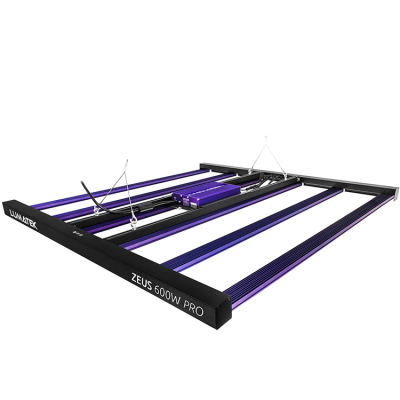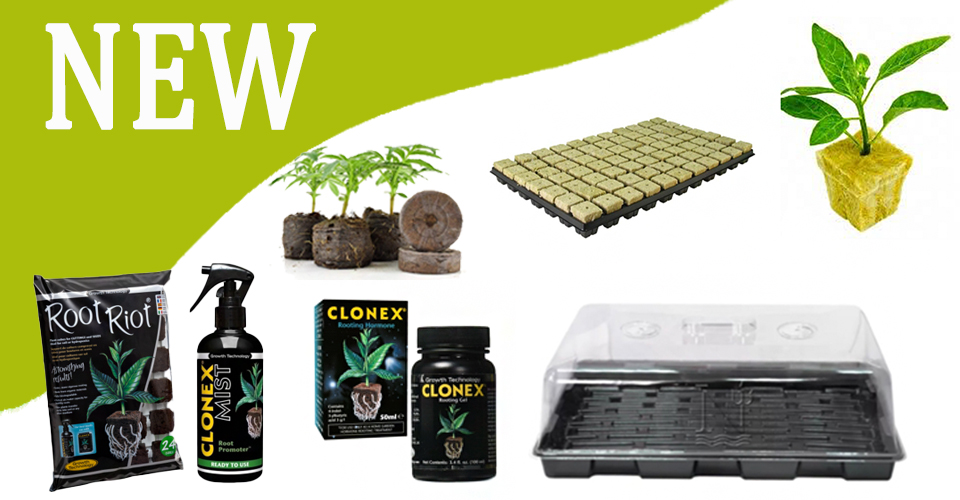Date: 20 Nov 2024
Why is light key for indoor plants?
For hobbyist and professional gardeners alike, there is no doubt that proper lighting is of paramount importance to the success of any garden, especially if it is indoors. A lack of sunlight, especially in autumn and winter, can significantly hamper plant growth. Even during the lighter seasons, however, supplemental lighting is an important factor in maintaining healthy and well-developed plants.
When it comes to artificial lighting, choosing the right lamps is critical. The right lamp should provide light that covers the necessary spectrums for photosynthesis, but at the same time does not increase the temperature of the air. This is especially important for plants grown indoors where the environment is limited and overheating can cause damage to the plant.
Among the most efficient and preferred technologies for such lighting are LED plant lamps. They emit red and blue light – the two most important spectrums for growth and development.

Types of lamps for growing plants
There are many plant lighting solutions on the market, each type having its own characteristics and applications. Here are some of the most popular:
- LED plant lights - a modern, energy-saving choice with many advantages.
- HPS lamps – traditionally used, but with high energy consumption.
- Fluorescent lamps - suitable for specific applications, but with a shorter life.
- CFL lamps – compact and convenient, but not as powerful as others.
Each of these types has its advantages and disadvantages, but LED lamps are increasingly popular due to their efficiency, durability and ability to cover different spectrums of light.
What makes LED lights so good for plants?
LED plant lights are built on the basis of LEDs, which gives them many advantages over traditional lighting technologies. Let's look at their main features:
- Ability to select a spectrum
LED lamps allow precise control of the light spectrum, which is key for the different stages of plant growth. For example, blue light stimulates growth, while red light is important for flowering and fruiting.
An example of this is Apollo 6 LED (270W) - LED Lamp for Growth and Flowering and Apollo 10 LED (450W) - LED Lamp for Growth and Flowering which provides high-quality lighting with a long life, thanks to first-class LEDs.

Products from leading brands such as Tomax , Apollo and Lumatek are distinguished by their reliability and efficiency.
Such as our great offer - TOMAX 645W Foldable LED Light Full Spectrum | Growth and Flourishing
-
TOMAX 645W Foldable LED Grow Light is designed with 6 LED bars, high-quality Inventronics driver and Samsung and Osram LEDs, generating full spectrum. A suitable light source for the entire development cycle from vegetative to the end of flowering. For the different varieties and periods, the lamp has a dimmer to adjust the power according to the needs of the plants and the stage of development. Illuminated area: 2 sq.m.
The array of LEDs creates an even distribution of light even at a short distance from the crop.

- Even distribution of light
LED lamps provide uniform illumination even in rooms with low ceilings or in multi-layer growing systems. Models like the Lumatek Zeus 600W Pro 2.9 LED - LED Lamp for Growth and Flowering are designed specifically to provide light for vegetation and flowering, guaranteeing optimal results for plants.
- Minimal heat radiation
One of the great advantages of LED lamps is that they emit almost no heat. This means they can be placed closer to the plants without burning them. In addition, due to the low heat emission, they do not affect the humidity of the air and soil.
Advantages of LED lighting for indoor plants
LED lights offer a number of benefits that make them a preferred choice for hobbyists and professionals alike:
- Energy efficiency : Electricity consumption is significantly lower compared to other types of lamps.
- Long life : LEDs can work for tens of thousands of hours without needing to be replaced.
- Safety : The lamps do not heat the surrounding objects, which reduces the risk of fire or damage to the surrounding furniture.
- Uniform illumination : LED illuminators have a small angle of illumination (120°), which provides focused illumination only on the plants.
- Less watering : Since the lamps do not heat the soil, it dries out more slowly and the plants need less frequent watering.
- No UV radiation : LED lamps do not emit harmful rays, making them safe for people and plants.
How to choose the right LED lamp?

- Determine the needs of the plants - Each plant has different light requirements, so choose a lamp that provides the necessary spectrum (blue for growth and red for flowering).
- Consider the size of the space – For small rooms or single plants, a compact, low-wattage lamp is suitable, while larger greenhouses require powerful models such as full-spectrum ones.
- Pay attention to efficiency – High-quality LED lamps with energy-saving technology will reduce electricity costs in the long run.
- Check the cooling system – A lamp with a good heat dissipation system will ensure a long lighting life and better plant conditions.
- Choose a reputable manufacturer - Products from proven brands such as Lumatek or Apollo and TomaX ensure reliability, durability and high performance for any type of plant.

Lighting and equipment from GROWSHOP MANIA
Whether you are growing seedlings, vegetables, herbs or flowers, LED lighting is the perfect choice for optimal plant growth and health.
In our grow shop you will find a variety of lamps, reflectors, cables, chokes and kits. If you do not find exactly what you are looking for, our team is ready to assist you with professional advice and suggestions to satisfy your every requirement.
Trust us and with our products you will become confident and successful gardeners! Browse our entire LED lighting category HERE !




















































Post comment